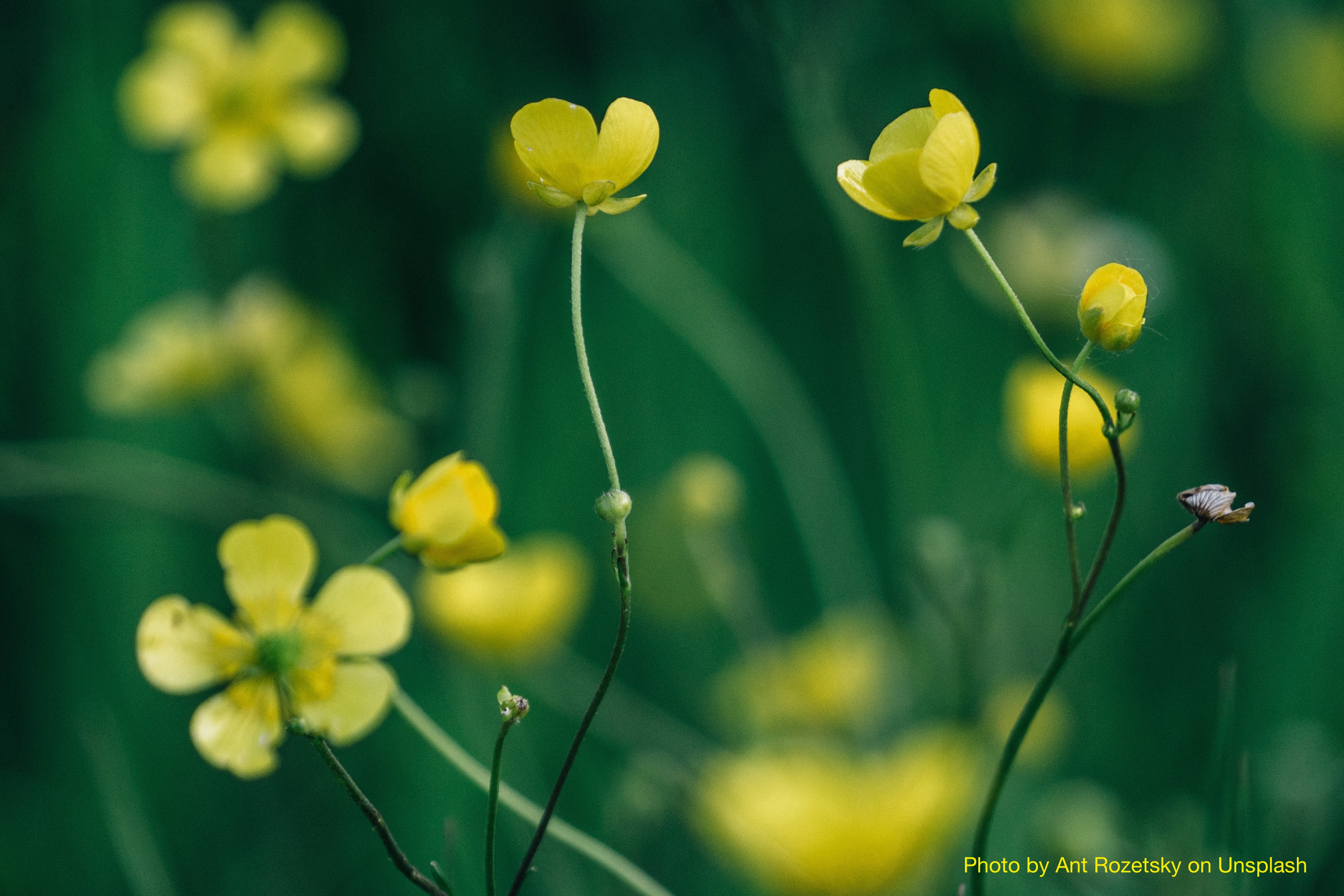
The meaning of Buttercups
Buttercups! Could a word sound lovelier? Just the thought of buttercups puts a smile on the face and a spring in the step. This cheery flower grows wild and blankets fields and roadsides with sunny yellow blooms. Often found growing alongside daisies, it is a favourite among children. Do you remember holding a buttercup beneath your chin to see if you liked butter?
And why, I hear you ask, am I talking about buttercups? Well, it happens that buttercups are one of the flowers attributed to the zodiac sign of Virgo and we are in that sphere of the astrological year. Virgo, the sixth sign of the zodiac is represented by a maiden – a Virgin usually with a sheaf of wheat in her arms. Which begs the question; why a sheaf of wheat is not the plant of choice for this sign? Anyway, it is the humble buttercup that we are looking at and, although perhaps it may object to being called ‘humble’, to my mind that word describes a flower that is not presumptuous or showy or one that flaunts its loveliness but rather one that lets you discover for yourself its gentle, sunny aspect. Being so unpretentious may give folks the idea that the buttercup is just one of your run of the mill flowers but, there they would be wrong. Let me enlighten you about this unassuming bloom.
Looking at the etymology of the buttercup we can see that it is a member of the genus ranunculus, (Latin for “little frog”, which probably refers to the many species that are found near water). While they range in size and height, all buttercups have yellow or gold flowers with green centers and, although they look delightful, buttercups are considered a noxious weed by farmers and indeed the flower is poisonous to cattle and humans so beware when handling the blooms.
Many stories are told about the origin of the buttercup. There is an ancient legend of a Libyan youth named Ranunculus who was known for his beautiful singing voice, which had the power to entrance any who heard him sing, and stunning attire of yellow and green silk. One day when singing to a group of wood nymphs, he became so spellbound by his own voice that he collapsed and gave up the ghost. To honour the fallen youth, Orpheus transformed him into the tiny buttercup that has been known as Ranunculus ever since.
The Miser and the Fairies: When a group of fairies saw an old miser crossing a field with a sack of gold, they stopped him to ask for alms. Not wanting to share his gold, the miser refused and continued on his way. However, the clever fairies cut a hole in his sack with a blade of grass and, as he crossed the field, his coins dropped from the bag and were scattered among the grass and, wherever the coins touched the earth, buttercups sprang forth
The Coyote: One day, when coyote was tossing his eyes in the air and catching them, an eagle swooped down and stole his eyes. Poor coyote did not know what to do but found that if he fashioned new eyes from the dainty buttercup he could see again. To this day, the buttercup flower is referred to a ‘coyote’s eyes’ in many areas of the U.S.
Did you know that the symbolic meanings of neatness, childishness and humility were attributed to the buttercup? Neither did I. Neatness because of the fine lines and neatly organised petals. Childishness is probably related to their bright colours and size. Humility because they attract attention with their simplicity and understated beauty.
Buttercup tells us to enjoy life, to live more simply, to concentrate on bringing more happiness to others which, will in turn, give the same to ourselves and, as buttercup shows, you don’t need to have a lavish extravaganza to do that.
